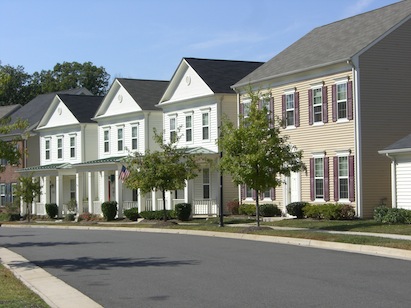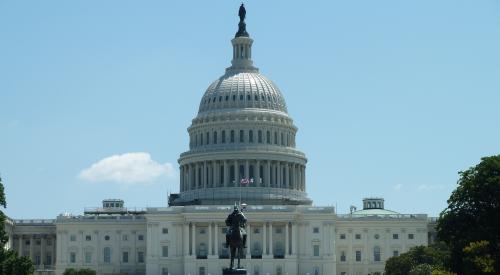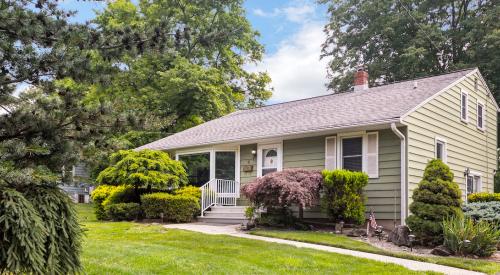The fiscal cliff, an economically damaging set of tax hikes and spending reductions scheduled to begin in 2013, has been avoided — for now — and that is good news for housing in the short run.
The enactment of H.R. 8, the American Taxpayer Relief Act of 2012, will extend permanently most of the 2001/2003 tax cuts. The legislation prevents a fiscal drag of approximately $600 billion in 2013, which would have been large enough to push the current weak economy into recession. That, in turn, would have reduced demand for both owner-occupied and rental housing and threatened the ongoing recovery for home building.
That outcome has been prevented, although future fiscal policy debates loom on the horizon. For example, a legislative fight over the debt ceiling and the delayed sequester will take place in February. And 2013 may be a year in which Congress finally considers comprehensive tax reform.
But for now, the following items in H.R. 8 are of interest to housing and home builders:
Business Tax Items
1. Permanently extends the 2001/2003 tax rates for adjusted gross income levels under $450,000 ($400,000 single). This is good news for small businesses and home builders, as 80 percent of NAHB members are pass-through entities paying taxes on the individual side of the code. The legislation protects the vast majority of membership from business tax hikes and keeps the 15 percent rates for capital gains and dividends for income levels under $450,000 ($400,000 single).
2. Permanently extends the Alternative Minimum Tax patch. In a typical tax year, about five million taxpayers are subject to the AMT. The permanent patch prevents many NAHB members from facing higher tax liability and protects housing deductions and credits such as the real estate tax deduction and the 25C energy efficiency tax credit from shrinking in value.
3. Permanently sets the parameters of the estate tax. The legislation extends the $5 million (indexed to inflation) exemption amount set in 2010, but raises the rate of tax to 40 percent for estate value above the exemption amount. A higher exemption amount protects large numbers of small businesses.
4. Extends present law section 179 small business expensing through the end of 2013. The provision increases the maximum amount of depreciation and the income phase-out threshold in 2012 and 2013 to levels in effect in 2010 and 2011 ($500,000 and $2 million, respectively). This provides cash flow and administrative cost benefits for small firms.
5. Extends the section 45L new energy-efficient home tax credit through the end of 2013. This allows a $2,000 tax credit for the construction of for-sale and for-lease energy-efficient homes in buildings with fewer than three floors above grade.
Homeowner Tax Items
6. Extends through the end of 2013 mortgage debt tax relief. This is an important rule that prevents tax liability from many short sales or mitigation workouts involving forgiven, deferred, or canceled mortgage debt. This will enable more short sales to move forward and reduce downward pressure on home prices.
7. Deduction for mortgage insurance extended through the end of 2013. Extending the deduction reduces the cost of homeownership for those using PMI, FHA, or VA mortgage insurance. This is particularly helpful for first-time home buyers. The deduction begins to be phased out for those earning more than $100,000, and a complete phase out is reached for households with an adjusted gross income of $110,000 or more.
8. Extends the section 25C energy-efficient tax credit for existing homes through the end of 2013. The tax credit is an important remodeling market incentive. It keeps the lifetime credit cap at $500.
9. Reinstates the Pease/PEP phase outs for deductions. For married taxpayers with adjusted gross income (AGI) above $300,000 ($250,000 single), the Pease limitation reduces total itemized deductions by 3 percent for the dollar amount of AGI above the thresholds. For example, a married couple with a $350,000 AGI would be $50,000 above the limit and must reduce their Schedule A deduction total by $50,000 multiplied by 3 percent, or $1,500. This would raise their taxes by about $500. The Pease rule will affect only a very small number of households who use the mortgage interest deduction.
Multi-family Tax Items
10. Extends the 9 percent Low Income Housing Tax Credit (LIHTC) rate for allocations through the end of 2013. Absent the credit fix, the LIHTC program would suffer a loss of equity investment for affordable housing projects.
11. Extension through the end of 2013 of base housing allowance rules for affordable housing. The military’s basic housing allowance is not considered income for purposes of calculating whether the individual qualifies as a low-income tenant.
Also noteworthy are items that are not in H.R. 8, including an itemized deduction cap or a defined fast-track tax reform process. Nonetheless, the return of the Pease rules suggests that items like the mortgage interest deduction will be under debate in 2013.
The resolution of the fiscal cliff now gives way to a series of mini-cliffs due to the need to raise the debt ceiling, establish government spending levels, and deal with the sequester. Over the long run, the future of housing demand, and interest rates in particular, will be affected by how Congress and President Obama solve the nation’s long-run deficit challenges.













